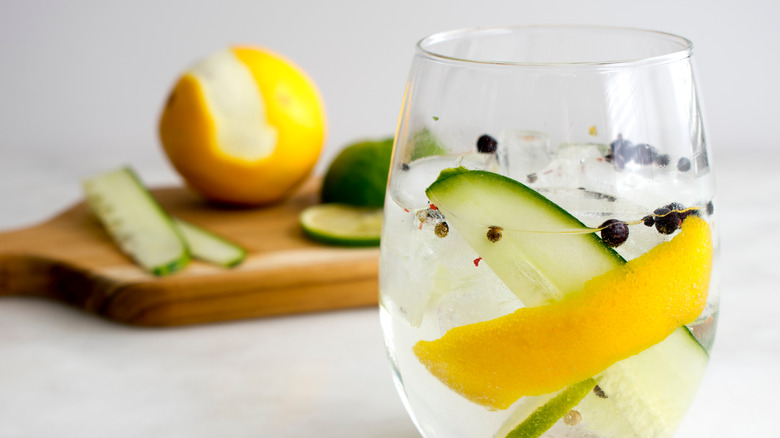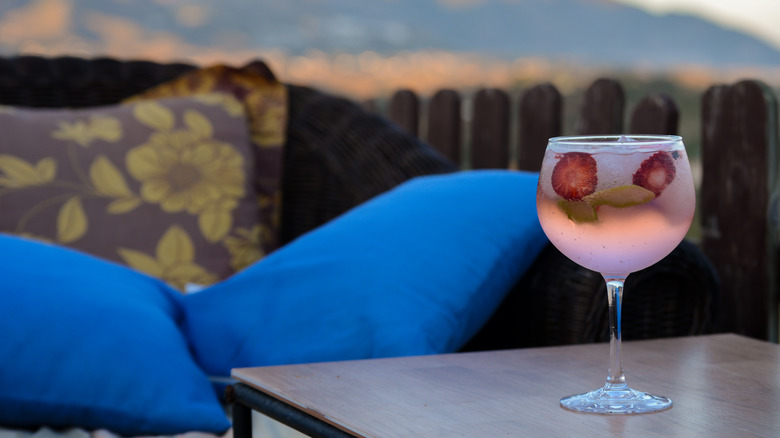The Spanish Gin And Tonic Elevates The Classic Cocktail To New Heights
The gin and tonic holds a special place in the hearts of those who can't get enough gin cocktails. The pleasant bubbles and bitter quinine serve as a great complement to the herbal, flowery notes of a well-made gin. While a standard gin and tonic might be your go-to drink, it could always get an upgrade.
Innovation is built into the heritage of the gin and tonic, after all. The drink was originally invented to take the edge off of antimalarial quinine powder that was issued to British soldiers in India. Turns out, the combination of sweetened quinine and water, a.k.a. tonic water, with gin was pretty great, and the drink quickly became a classic. While you can always make a bolder gin and tonic recipe by upgrading your gin, there are other options out there as well.
Many folks associate the gin and tonic with Britain because of its imperial origins, but Spain gives the British isle a run for its money. In fact, Drink Life Beverages reports that Spain is the largest consumer of gin per capita. It's no wonder, then, that the Spaniards cracked the code on this classic cocktail.
It's all about the garnishes
The main difference between the classic gin and tonic and the Spanish version is the garnish. Olive and Mango says that the drink is usually either served in a highball or balloon wine glass and is enhanced by a heavy dose of garnishes that elevate the natural flavors of the gin. These garnishes aren't like the overloaded Bloody Marys at brunch, either. Every garnish is there for a reason, but because of the gin's flavor profile, these serve an even bigger role.
Craft Gin Club points out that gin is a base spirit that is flavored by juniper berries and a wide variety of other botanicals and aromatics. This means that different types of gins can have wildly different flavor profiles based on what they were distilled with. The Alcohol Professor says that the best thing about Spanish gin and tonics is that they can complement the flavor profile of the gin and further enhance it. Examples of garnishes include classics like mint, basil, or fruit to more exotic pepper kernels, orange bitters, or star anise. Whatever will go best with your gin of choice or suit your personal tastes.
Eater adds that another big difference is the type of ice that is used. It recommends something similar to Spanish 'gas station ice', which usually comes in a long cylindrical form. Lots of ice is essential to any gin and tonic, and this shape will keep your drink cool without watering it down.

